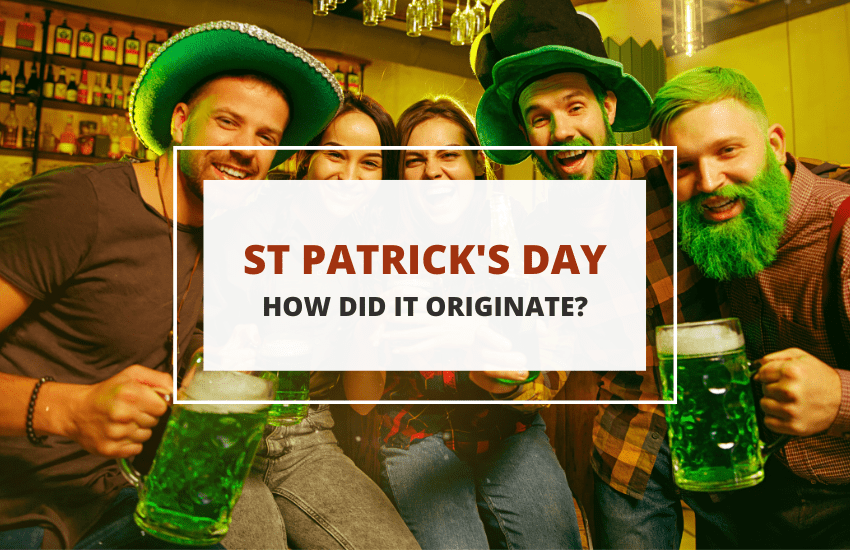
St Patrick’s day is one of the most popular holidays in the United States, even more so than in Ireland. In case you are not familiar with Saint Patrick’s Day, it is a day that celebrates Saint Patrick, the patron saint of Ireland. Saint Patrick’s is a day to celebrate Saint Patrick, but it is also a day to celebrate Ireland, its heritage, a culture that it selflessly shared with the world.
Many Americans of Irish descendants celebrate this festivity every year on March 17, and it has turned into a legendary celebration indeed. Nowadays, Saint Patrick’s day festivities occur all over the world, predominantly practiced by Christians that are not necessarily Irish but celebrate St Patrick’s day as a part of their religious festivities.
Saint Patrick’s is a day to celebrate Saint Patrick, but it is also a day to celebrate Ireland, its heritage, a culture that it selflessly shared with the world.
Keep reading to discover what makes this day so special to millions of people around the world.
Saint Patrick’s Day is not just a Catholic holiday.
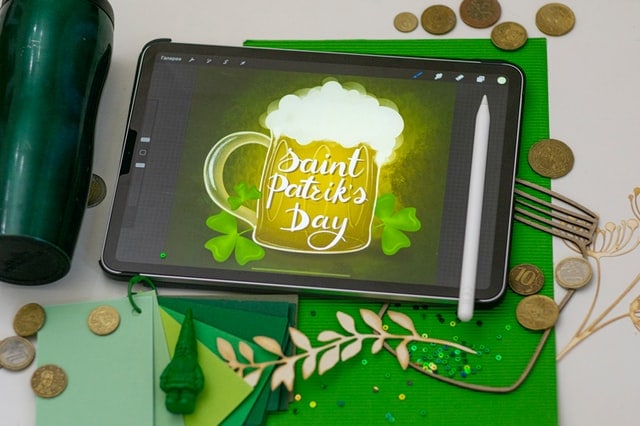
Although it was the Catholic Church that began commemorating St Patrick with an annual feast in the 17th century, it’s not the only Christian denomination that celebrates St Patrick. The Lutheran Church and the Eastern Orthodox Church also celebrate Saint Patrick.
It is not uncommon that Saint Patrick’s feast is celebrated even amongst Greek Orthodox Christians in the US and all over the world because Eastern Orthodoxy celebrates him more in a vague sense as a bringer of Christianity to Ireland and as one who enlightens.
All those who celebrate Saint Patrick remind themselves of his years in slavery in Ireland after he was snatched from Britain and his eventual entrance into monastic life and his mission to spread Christianity in Ireland.
Ireland was a predominantly pagan country before St Patrick’s arrival.
Ireland was considered a Pagan country before Saint Patrick arrived in 432 AD to spread Christianity. At the time that he started roaming the landscapes of Ireland to spread his faith, many Irish people believed in Celtic deities and spirits that were deeply rooted in their everyday experiences.
These beliefs had existed for more than 1000 years, so it was not an easy feat for St Patrick to convert the Irish people to the new religion.
Mythology and legends were a huge part of their beliefs and there were still druids roaming these lands when St Patrick set his foot on the Irish beaches. His missionary work included finding a way to bring the Irish closer to Christianity while acknowledging that this would take many decades.
The Irish of the time counted on their druids who were magical religious practitioners of Celtic paganism, and they were not ready to renounce their faith easily, especially when not even the Romans fully managed to convert them to their pantheon of gods. This is why it comes as no surprise that Saint Patrick needed the help of other bishops in his mission – he had his work cut out for him.
The three-leaf clover is a symbol of the Holy Trinity.
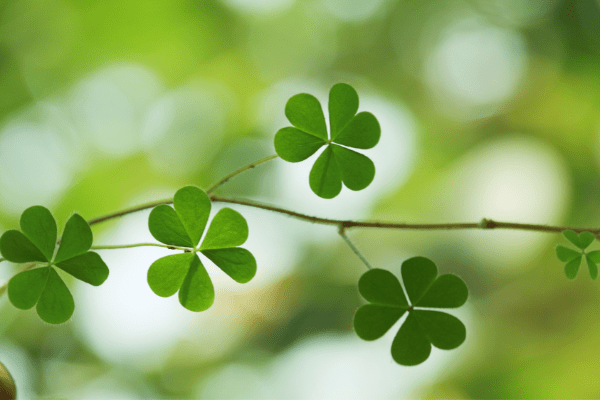
It is hard to imagine Saint Patrick’s day festivities without clover or shamrock. Its symbolism is everywhere on hats, shirts, pints of beer, faces, and streets and is proudly displayed by those who participate in these celebrations.
Many people do not know why clover is so important to these festivities and they assume that it is merely a symbol of Ireland. While this is partially true, as clover is one of the symbols attributed to Ireland, it is directly also linked to Saint Patrick who is often displayed holding a clover in his hand.
According to a legend, Saint Patrick used three-leaf clover in his missionary work to explain the concept of the Holy Trinity to those he aimed to Christianize.
Eventually, people started to decorate their church attire with shamrock as it is a rather delicate and beautiful plant and was very easy to find as it grew all around Ireland.
Wearing green is also associated with nature and leprechauns.
Wearing green is the custom during St. Patrick’s festivities and if you have ever attended a Saint Patrick’s celebration you might have seen people of all ages wearing green shirts or any other green attire adorned with shamrocks.
It’s clear that green is a symbol of Ireland (often labeled the Emerald Isle), and is attributed to the hills and pastures of Ireland – a color so prevalent in this area. Green was associated with Ireland even before St Patrick arrived there.
Green was well respected and revered because it is a symbol of nature. According to one legend, the ancient Irish people believed that wearing green would make them invisible to the pesky leprechauns that would want to pinch anyone they could get their hands on.
Chicago once dyed their river green for Saint Patrick’s Day.
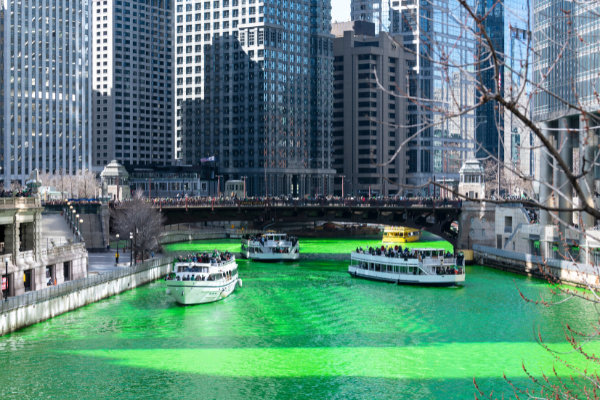
The City of Chicago decided to dye its river green in 1962, which turned into a beloved tradition. Today, thousands of visitors go to Chicago to see the event. Everyone is eager to take a stroll on the riverbanks and enjoy the relaxing emerald green color.
The actual dyeing of the river was originally not done for St Patrick’s day.
Back in 1961, the manager of the Chicago Journeymen Plumbers Local Union saw a local plumber wearing overalls stained with the green color that was dumped in the river to indicate whether there existed any major leaks or pollution.
This manager Stephen Bailey thought it would be a great idea to have this annual river check-up on St Patrick’s day and as historians like to say – the rest is history.
Previously around 100 pounds of green dye is released into the river making it green for weeks. Nowadays, only around 40 pounds of environmentally friendly dye is used, making the water green just for a few hours.
More than 34.7 million people living in the US have Irish ancestry.
Another incredible fact is that so many people in the USA have Irish ancestry. When compared to the actual population of Ireland it’s almost seven times larger!
This is why St Patrick’s day is a huge event in the United States, especially in the areas where Irish immigrants came and decided to stay. The Irish were one of the first organized groups that came to live in the United States, starting in the 17th century with some minor migrations to the 13 colonies and booming in the 19th century during the potato famine.
In the years between 1845 and 1850, a terrible fungus destroyed many potato crops in Ireland leading to years of starvation that claimed more than a million lives. This major catastrophe caused the Irish people to search for their luck elsewhere, making them one of the largest growing immigrant populations in the United States for decades.
It is hard to imagine St Patrick’s day without Guinness.
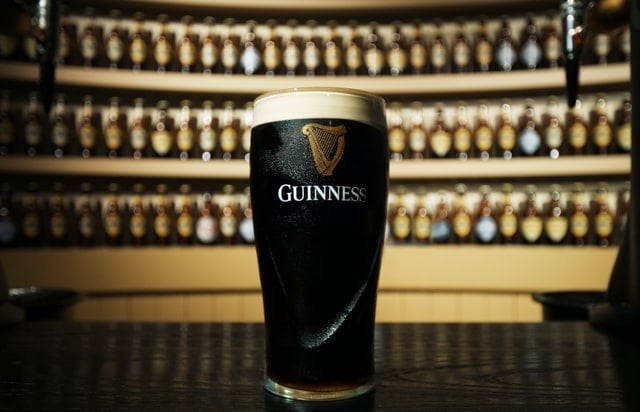
Guinness is a popular Irish dry stout – a dark fermented beer that originated in 1759. Nowadays, Guinness is an international brand that is sold in more than 120 countries of the world and remains the most popular alcoholic drink in Ireland.
The distinct flavor of Guinness comes from malted barley. The beer is known for its distinctive tang and a very creamy head that comes from nitrogen and carbon dioxide present in the beer.
Traditionally, this is a slow-pouring beer, and it is generally suggested that the pouring lasts for around 120 seconds so that a creamy head would form properly. But this is not required anymore due to improvements in the technology of beermaking.
Interestingly, Guinness is not just a beer, it is also an ingredient in some Irish dishes.
St Patrick’s parade started in America, not in Ireland.
Despite St Patrick’s day being celebrated in Ireland since the 17th century, records show that parades were not originally organized in Ireland for these purposes and that the first observed St Patrick’s parade occurred on March 17, 1601, in one of the Spanish colonies that we today know as Florida. The parade was organized by an Irish vicar that lived in the colony.
A century later, Irish soldiers that served in the British military organized the parade in Boston in 1737 and again in New York City. This is how these parades started gathering a lot of enthusiasm making St Patrick’s parades in New York and Boston grow in size and become popular.
Irish immigrants to the United States were not always well-treated.
Although St Patrick’s day is a beloved festivity that is celebrated all over the United States and Canada, Irish immigrants that came after the devastating potato famine were not welcomed with open arms.
The main reason why so many Americans objected to receiving so many Irish immigrants was that they found them unqualified or unskilled and saw them as draining the welfare budget of the country. At the same time, there was a widespread misconception that Irish people were ridden with disease.
This is why almost a quarter of the Irish nation started its humble new chapter in the United States on a rather bitter note.
Corned beef and cabbage are not originally Irish.

It is very common to find corned meat and cabbage with a garnish of potatoes in many restaurants or on many dinner tables during St Patrick’s festivities, but this trend did not originally come from Ireland.
Traditionally, it was popular to serve ham with cabbage, but once the Irish immigrants came to the United States, they found it hard to afford the meat so instead, they substituted this with cheaper options like corned beef.
We know that this tradition started in the slums of lower Manhattan where a lot of Irish immigrants lived. They would buy leftover corn beef from ships that returned from China and other distant places. The Irish would then boil the beef up to three times and then boil the cabbage with the beef water.
You might have noticed that there is usually no corn in the meal. This is because the term was used for the process of treating beef with large chips of salt that looked like corn kernels.
Saint Patrick did not wear green.
While we will always associate St Patrick’s day represented in green, the truth is – he was known to wear blue rather than green.
We talked about the importance of green for the Irish, from the association with nature to pesky leprechauns, to green clover. Another interesting detail is the association of green to the Irish independence movement that used these colors to highlight the cause.
Green thus became an important aspect of Irish identity and a symbol of a national revival and a unifying force for many Irish people all over the world. But if you thought that the symbolism of green used on St Patrick’s Day originated because he wore green, you’d be wrong.
Leprechauns came before St Patrick.
Nowadays we often see leprechauns displayed everywhere for St Patrick’s day. However, ancient Irish people believed in this mythological creature centuries before Saint Patrick even came to the shores of Ireland.
In Irish folklore, a leprechaun is called Lobaircin which means “A small-bodied fellow”. A leprechaun is usually displayed as a red-haired small man wearing green clothes and sometimes a hat. Leprechauns were known for their grumpy temper and the Celtic peoples believed in them as much as they believed in fairies.
While fairies were tiny women and men that use their powers to do good or evil, leprechauns are very cranky and angry souls that were in charge of fixing the shoes of other fairies.
St Patrick was incorrectly credited with driving out snakes from Ireland.
Another popular story is that snakes used to live in Ireland before Saint Patrick’s came to spread his missionary work. There are many frescoes and representations of St Patrick coming to the shores of Ireland and stepping on a snake below his feet.
Interestingly, there are no fossilized remains of snakes found in Ireland, indicating that it was probably never a hospitable place for reptiles to live.
We know that Ireland was probably too cold and went through a harsh Ice Age. In addition, Ireland is surrounded by seas making the existence of snakes highly unlikely during St Patrick’s time.
The arrival of St Patrick left an important mark on Irish people and the Church likely attributed him with driving out snakes from Ireland to highlight his importance as a bringer of good. It’s likely that the snakes simply represent Satan and evil.
St Patrick’s day was a more solemn festivity in Ireland.
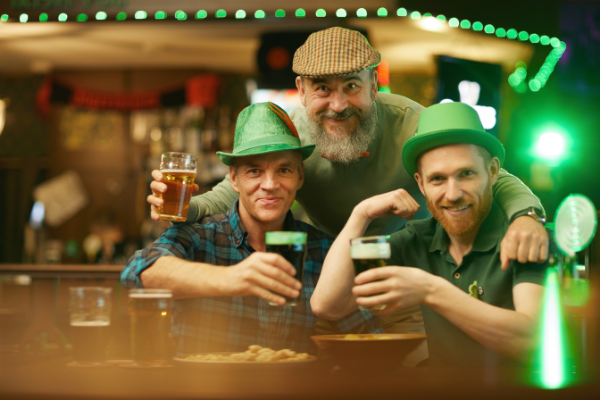
It was not until the 1970s that Ireland became a popular tourist destination for St Patrick festivities. It took some time for this celebration to turn into a large event because Irish people took this festivity as a reason to gather in a rather formal and even solemn atmosphere.
For centuries, St Patrick’s day was a rather strict, religious occasion without parades. Even bars would be closed on that day. However, when parades began to take place in America, Ireland also saw a boom of tourists flocking in to visit the country where it all started.
Nowadays, St Patrick’s day is celebrated in Ireland similarly like in the United States, with plenty of cheerful visitors enjoying a pint of Guinness and enjoying yummy food.
Beer sales skyrocket every Saint Patrick’s Day.
We know that Guinness is highly popular during Saint Patrick’s Day, but did you know that in 2017 it was estimated that up to 13 million pints of Guinness were consumed worldwide on Saint Patrick’s Day?!
In 2020, beer sales in America went up 174% just in one day. St Patrick’s day has become one of the top alcohol-consuming festivities in the United States and up to $6 billion is spent celebrating it.
There were no female leprechauns.
Another popular visual representation of Saint Patrick’s Day is the lady leprechaun. In reality, Celtic people did not believe that female leprechauns existed in their mythology and the title was strictly reserved for cranky male leprechauns wearing green and cleaning the shoes of fairies. Therefore, the lady leprechaun is a relatively new invention.
Erin go Bragh is not a correct spelling.
You might have heard the expression Erin go Bragh. Most people who shout it during St Patrick’s day celebrations do not know what this expression means. Erin go Bragh means “Ireland forever” and is a corrupted version of a phrase that comes from the Irish language.
Some Irish despise the commercialization of Saint Patrick’s Day.
Although Saint Patrick’s Day seems so important nowadays, many people still disagree and feel like this event has become too commercialized in North America. They feel that it’s been developed by the Irish diaspora to the point that it seems that it is celebrated only to attract money and boost sales.
This is not where the criticism stops. Others add that the festivities as they are being organized in the United States and Canada represent a somewhat distorted version of Ireland that sometimes might seem stereotypical and far from the actual Irish experience.
St Patrick’s day helped popularize the Irish language.
St Patrick’s day might seem commercialized to some, while for others it is a fundamentally Irish festivity that celebrates the patron saint and the rich culture. Regardless of where you may stand one thing is clear – it helped popularize Ireland and its language.
The festivity has brought back attention to the Irish language that is still spoken on the island by some 70,000 daily speakers.
Irish was a predominant language spoken in Ireland before the 18th century when it was replaced by English. Other than these 70,000 regular speakers, other Irish citizens speak the language on a lesser level.
There have been many efforts to restore the importance of Irish and this has been a constant struggle in Ireland for decades. The projects to restore the importance of Irish succeeded in various degrees and Irish is still not completely rooted in all parts of the country.
The use of language is enshrined in the Constitution as the official language of Ireland and is one of the official languages of the European Union.
St Patrick’s day helped Ireland go global.
Although Ireland has been doing pretty well in recent times and booming in many different sectors, St Patrick’s day remained its most important export to this day.
In 2010, many famous landmarks all over the world lit up in green as a part of a global greening initiative by the Ireland Tourist institution. Since then, more than 300 different landmarks in many countries of the world go green for Saint Patrick’s Day.
Wrapping Up
There you have it! We hope that you discovered some interesting information about St Patrick’s day. This festivity is now a global event that reminds the world of Irish culture that has given so much to humanity.
Next time you don your green hat and order a pint of Guinness we hope you will remember some of these interesting facts and can truly enjoy the splendid St Patrick’s Day festivities. Cheers!








